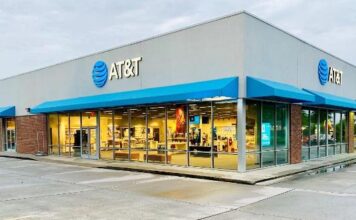Telecom Lead America: Motorola Solutions’ recent acquisition of Psion will bolster the company’s Enterprise segment.
Despite worsening results in its Enterprise segment, Motorola Solutions achieved overall revenue growth.
In 3Q12, Motorola Solutions continued its trend of growing revenues in its Government business, while seeing its Enterprise segment fall steeply due to declines in the iDEN business, which the company is exiting, as well as slow deal activity, especially in Europe. Overall sales increased 3.3 percent year-to-year and gross and operating margins remained healthy at 50.5 percent and 15 percent, respectively. Gross margin was flat year-to-year, while operating margin expanded 280 basis points due to a continued focus on spending efficiency.
Motorola’s public sector business will see further growth in 4Q12 and early 2013 as governments spend on new communications technology for emergency personnel and public safety LTE gains acceptance in foreign markets, such as Brazil, where Motorola recently trialed the technology.
The Enterprise business will struggle to grow organically in the remainder of 2012 as businesses, particularly those in Europe, restrain spending. New distribution channel agreements and the Psion acquisition expand Motorola’s geographic reach, but will not begin to ramp up until early 2013.
The Enterprise segment continues to face challenges, but the Psion acquisition expands Motorola’s geographic reach
Motorola’s October acquisition of Psion will bolster the company’s Enterprise segment, which has lost momentum since achieving 10.8 percent year-to-year growth in 2011. In 3Q12, sales in the segment fell 12.8 percent year-to-year to $632 million. Motorola announced it would acquire Psion, a United Kingdom-based maker of enterprise devices, for $200 million in June 2012 and completed the transaction in October 2012. Psion earned revenues of $273 million in 2011 and boasts customers in over 50 countries. Psion also employs 830 people, but TBR expects Motorola to make cuts in Psion’s ranks as redundancies are identified.
Psion exited the consumer products business in 2001 and is entirely focused on the enterprise space, specifically key verticals like manufacturing, transportation, and logistics that utilize ruggedized handheld devices. Psion’s strategy meshes with Motorola’s current vertical focus, but does not meaningfully broaden the company’s addressable market in terms of industry sectors. Psion does, however, significantly benefit Motorola geographically, due to its EMEA-centric customer base. Motorola’s customers, in contrast, are concentrated in North America, which should spur opportunities to cross-sell products from the combined company’s portfolio.
Motorola’s Government segment is over performing in an age of increased austerity.
Motorola relies on its Government segment for over two-thirds of revenues, making a slowdown in public sector spending detrimental to the company. Governments, however, consistently prioritize purchases from Motorola, as they are usually mission-critical public safety purchases. For this reason, Motorola’s Government segment has achieved year-to-year revenue growth of over 11 percent in every quarter of 2012.
Motorola is attempting to evolve into a more services-oriented company. Public safety LTE could act as a springboard for this endeavor, as Motorola could, in addition to maintenance and basic repair, provide managed outsourcing of networks, as well as high-value consulting, network design, and planning services. During difficult economic times, Motorola can make the case with government organizations that handing over control of the network lifecycle will result in operational simplicity and cost savings.
Michael Soper, Networking & Mobility Research Analyst, Technology Business Research
[email protected]






